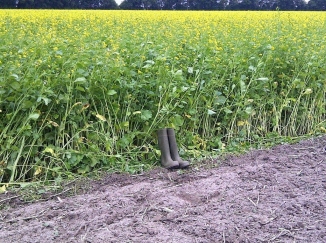 After an extremely difficult and wet season, cover crops could provide a spring cropping solution for farmers whose winter crops have failed and where it is still proving difficult to establish combinable crops.
After an extremely difficult and wet season, cover crops could provide a spring cropping solution for farmers whose winter crops have failed and where it is still proving difficult to establish combinable crops.
Paul Brown from Kings Game Cover and Conservation Crops is an expert advisor on the selection and establishment of cover crops. He says "Used correctly these crops could provide a great alternative, delivering soil benefits this spring."
Spring sown cover crops can be used to address some or all of these points:
- Absorb some excess moisture from the soil during the summer
- Prepare the ground for a good entry into wheat or oilseed rape in August/September
- Help correct some soil structure problems
- Smother weeds/help with blackgrass
- Catch any nitrogen left in the soil and/or 'fix'' some N into the soil through the use of a legume
- Add back some much needed organic matter
- Put some vitality/life back into the soil.
A well established cover crop can do all the above... and maybe more:
- Some species of cover crop can be used on potato and beet farms to reduce nematodes. Potato Cyst Nematode (PCN) in potatoes and Beet Cyst Nematode (BCN) in beet. However, to do this specific varieties are required
- Some species can provide a quick, useful forage crop.
What crops are available?
1. Mustard. Cheap and easy. Beware of placing this in a rape rotation. It is quick growing and will catch nitrogen and add large amounts of organic matter. In a beet or potato
rotation it can be used to reduce PCN or BCN. Oil radish is another option here.
2. Vetch. This crop will be of particular interest this spring. It will grow faster than clover and 'fix' a high amount of nitrogen. It is easy to grow and produces high levels of organic matter. This is ideal before a rape crop. Beware of placing it before a wheat crop as it might offer too much nitrogen!
3. Vetch/Mustard mix. This will be useful before many winter cereal crops. It reduces the amount of N from a pure vetch crop, plus it adds organic matter and has a deeper rooting system, improving drainage.
4. Westerwolds. If a grower has a use for quick and large bulk forage, Westerwolds annual ryegrass is ideal. It is very fast growing. This seed delivers a silage crop in just 10/12 weeks from April sowing.
Paul concludes: "Green cover crops do need appropriate and specific agronomic care. However, established well, with an adequate seed rate and then chopped/incorporated properly they could help tackle a number of grower issues this season."









